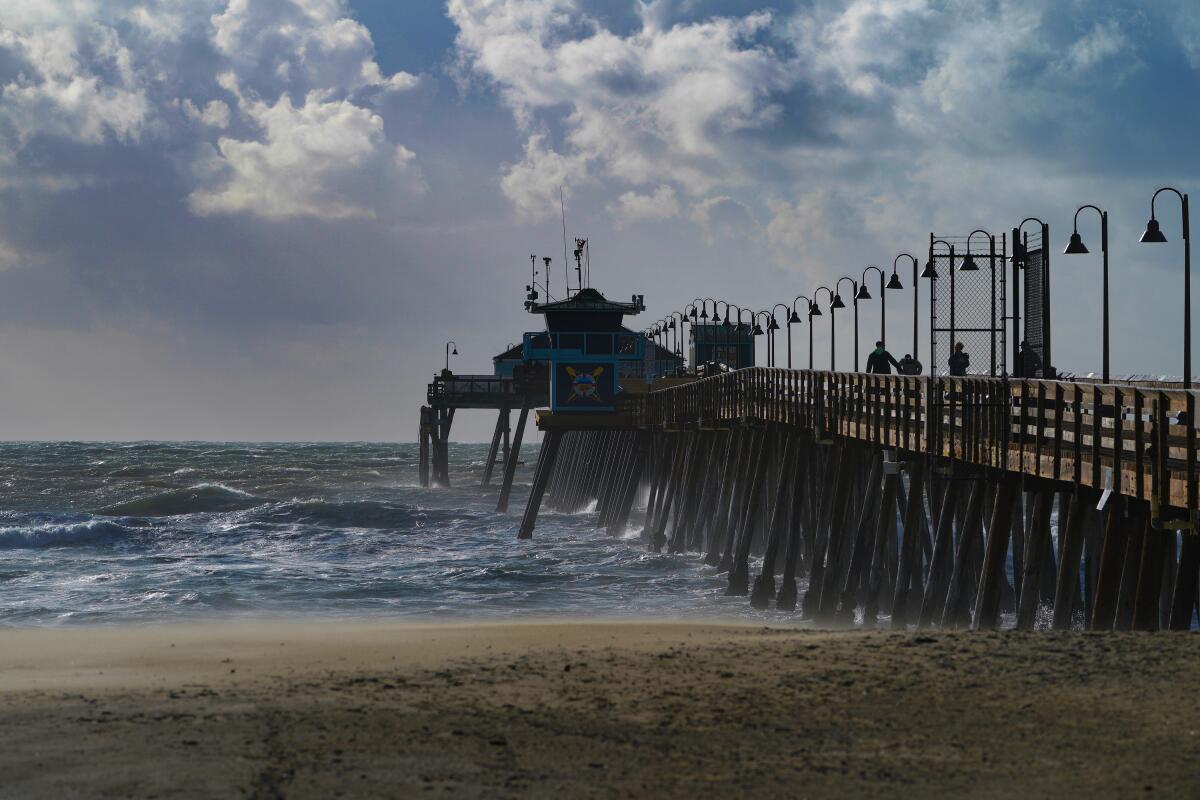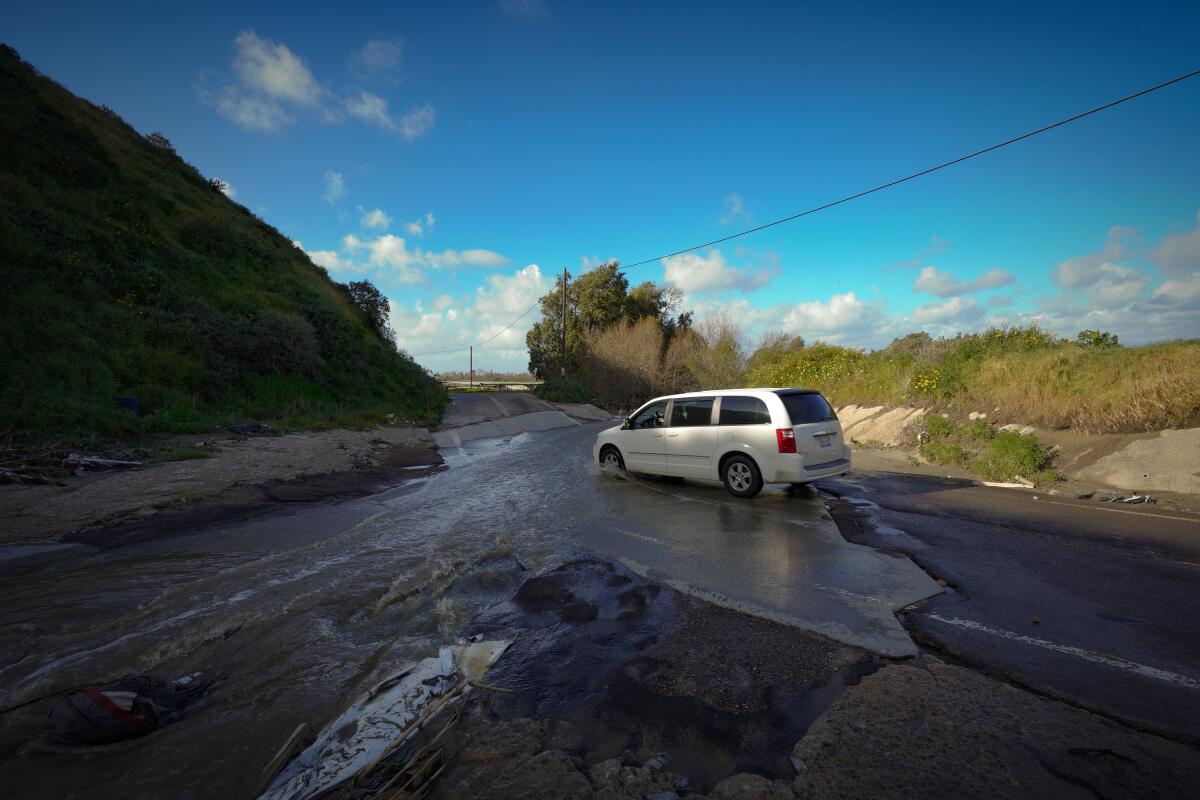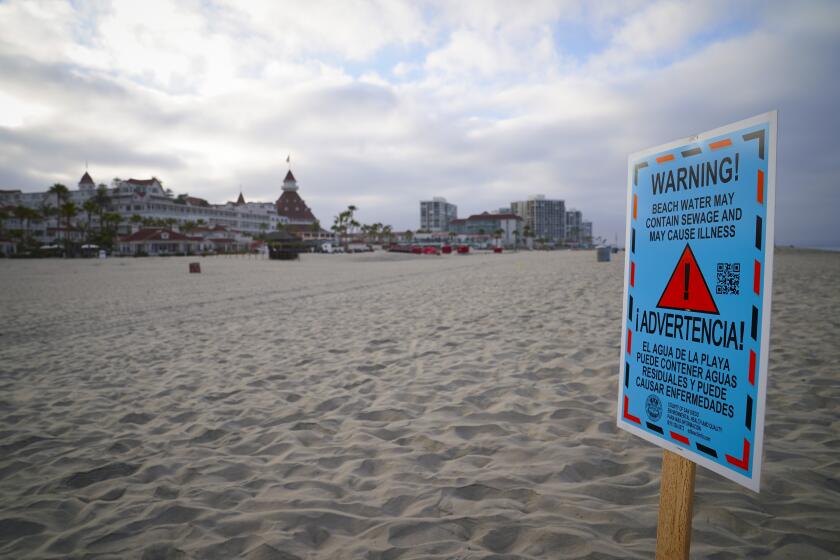Tijuana sewage isn’t only in Imperial Beach waves. It’s in the air. And San Diegans are breathing it

- Share via
San Diego — Sewage pollution spilling over the border from Tijuana into the San Diego region not only threatens the health of surfers and swimmers but potentially those simply breathing the air.
That’s according to a study from UC San Diego’s Scripps Institution of Oceanography published Thursday in the journal Environmental Sciences & Technology, which found sewage-linked bacteria in sea-spray aerosols at Imperial Beach.
“Once pollutants become airborne that just means so many more people can be exposed to those pollutants,” said Kim Prather, principal investigator on the study and director of the Center for Aerosol Impacts on Chemistry of the Environment at Scripps. “It extends well beyond just people going to the beach or getting in the water.”
The potential health impacts are still unknown, cautioned researchers. Studies are ongoing and could eventually include an epidemiological investigation.
Prather said her team plans to start swabbing lifeguards, surfers and others to gauge the extent of respiratory exposure. Researchers also hope to scrutinize hospital records and monitor indoor air quality.
“The bottom line is we don’t know what the effect is yet of inhaling this cocktail that comes out of the ocean,” she said, adding: “This is tip of the iceberg. We’re trying to keep everybody calm.”
The study took place following rain events in early 2019, with researchers taking air and water samples along the Tijuana River, Imperial Beach Pier and Scripps Pier in La Jolla. Using DNA sequencing, the team linked up to 76% of the airborne bacteria in Imperial Beach to the heavily polluted river.

There is a well-established body of research that has found microorganisms transfer from the ocean to the atmosphere, but this is the first study to link airborne bacteria to a known source of sewage, said co-author Robert Knight, a professor of pediatrics, computer science and engineering at UC San Diego.
“It was a complete shock to find how much of microbes in the air were traceable back to sewage,” he said. “We had no idea that effect would be so strong.
“Now that we know this is a real phenomenon,” he added, “we need to find out what are the impacts to human health.”
About $1.5 million has been secured by Rep. Scott Peters in this year’s omnibus spending bill for Prather and her team to further investigate the public health ramifications of airborne pollutants and potential pathogens, officials said.
Imperial Beach and Coronado suffered the highest number of beach closures in more than a decade last year, including through tourist season. ‘Warning’ days added to the pain.
Beaches as far north as Coronado were closed due to sewage pollution from Mexico at a record pace in 2022. Imperial Beach, for example, had signs warning of sewage contamination posted along its beaches on 249 days last year. The Tijuana Sloughs, a once-coveted surfing spot located at the mouth of the river, hasn’t been open since December 2021.
Swimming in sewage-tainted waters can expose beachgoers to dangerous bacteria and viruses, according to county public health officials. Those who ignore the restrictions could be at risk of diarrhea, fever, respiratory disease and infections.
Water polluted with sewage, compared with the typical urban runoff that follows rainstorms, carries a much higher risk of pathogens, such as E. Coli, norovirus and salmonella, officials said.
More to Read
Sign up for Essential California
The most important California stories and recommendations in your inbox every morning.
You may occasionally receive promotional content from the Los Angeles Times.












